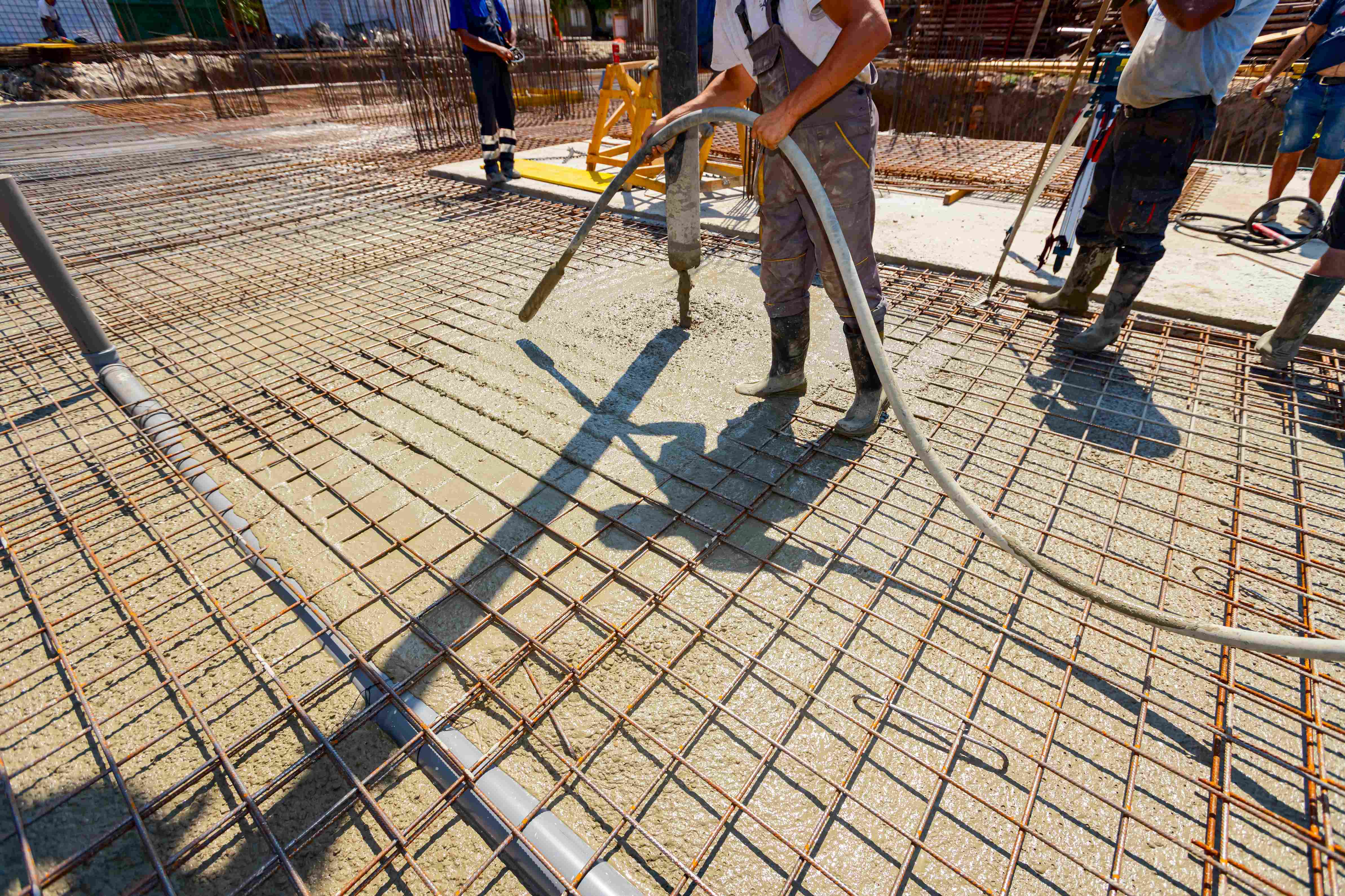How Proper Compaction of Concrete Helps to Build A Strong & Durable Structure
Concrete is one of the most versatile and widely used materials in construction, renowned for its strength and durability. However, these attributes can only be achieved when concrete is properly compacted during the construction process. Compaction plays a critical role in removing trapped air, ensuring optimal density, and maximizing the structural integrity of concrete. This blog explores how proper compaction contributes to strong and durable structures and why it is an essential aspect of modern construction practices.

Understanding Concrete Compaction
Compaction of concrete involves the process of removing air voids trapped within the concrete mix. When concrete is placed, it contains air pockets that, if left unaddressed, can weaken the structure, reduce density, and create pathways for water ingress. Proper compaction eliminates these air voids, consolidates the concrete, and ensures it adheres uniformly to reinforcement bars, resulting in improved strength and durability. The process can be performed manually or mechanically, depending on the scale of construction. Common mechanical methods include internal vibrators, surface vibrators, and vibrating tables, all of which efficiently compact the concrete and ensure a robust final structure.
Key Benefits of Proper Concrete Compaction
1. Enhanced Structural Strength: Air voids in concrete significantly reduce its compressive strength. Proper compaction ensures that these voids are minimized, allowing the concrete to achieve its maximum design strength. This is particularly important in large-scale projects such as high-rise buildings, bridges, and dams, where the load-bearing capacity is a critical factor. 2. Improved Durability: Concrete structures are constantly exposed to environmental factors such as moisture, temperature variations, and chemical attacks. Proper compaction creates a denser and more impermeable concrete, reducing the risk of water penetration and subsequent damage like corrosion of reinforcement bars or freeze-thaw cycles. This ultimately increases the lifespan of the structure. 3. Prevention of Honeycombing: Honeycombing refers to voids or gaps in concrete caused by inadequate compaction. These voids compromise the structure’s integrity and aesthetics. Proper compaction eliminates honeycombing, ensuring a smooth and uniform surface that meets both functional and aesthetic requirements. 4. Better Bond with Reinforcement: Properly compacted concrete adheres more effectively to reinforcement bars, creating a stronger bond. This enhances the composite action between concrete and steel, which is crucial for structural stability and resistance to dynamic loads such as earthquakes or heavy traffic. 5. Resistance to Chemical Attack: In industrial settings, concrete structures are often exposed to chemicals that can deteriorate them over time. Proper compaction ensures that concrete is dense and resistant to such chemical attacks, maintaining its structural integrity even in harsh conditions.
Different types of method of Concrete Compaction
1. Use of Vibrators: Mechanical vibrators are the most common tools for compacting concrete. Internal vibrators, surface vibrators, and form vibrators are used based on the nature of the project. These tools help distribute concrete evenly and eliminate air pockets effectively. 2. Layer-by-Layer Placement: For thick concrete sections, placing the concrete in layers and compacting each layer thoroughly prevents the formation of voids and ensures uniform compaction throughout the structure. 3. Monitoring Workability: The workability of the concrete mix plays a significant role in achieving proper compaction. A well-designed mix with the right proportions of water, cement, and aggregates facilitates easy compaction and ensures optimal density. 4. Skilled Workforce: Proper compaction requires skilled operators who understand the characteristics of concrete and can adjust their techniques based on the specific requirements of the project. Investing in workforce training ensures consistent results.
Consequences of Inadequate Compaction
Failing to compact concrete adequately can lead to severe issues, including: Reduced Strength: Uncompacted concrete fails to achieve its design strength, compromising the structure’s load-bearing capacity. Durability Issues: Air voids allow water ingress, leading to cracks, spalling, and corrosion of reinforcement bars. Increased Maintenance Costs: Structures with inadequate compaction require frequent repairs, leading to higher long-term costs. Safety Risks: Compromised structural integrity poses significant safety risks, especially in critical infrastructures like bridges and high-rise buildings.
Role of Ready-Mix Concrete in Proper Compaction
The use of ready-mix concrete (RMC) plays a pivotal role in achieving proper compaction. RMC ensures a consistent mix with controlled proportions of materials, optimizing workability and density. Leading suppliers like Firstchoice Readymix provide concrete that is tailor-made to meet project-specific requirements, reducing the risk of errors during compaction. Additionally, RMC eliminates the need for on-site mixing, saving time and ensuring a more uniform product.
Conclusion Overall, Proper compaction of concrete is not merely a procedural step but a cornerstone of strong and durable structures. It enhances structural strength, improves durability, prevents defects, and minimizes long-term maintenance costs. By investing in quality materials, skilled labor, and modern tools, builders can ensure proper compaction and deliver projects that stand the test of time. For all your concrete needs, Firstchoice Readymix offers premium quality ready-mix concrete solutions tailored to your construction requirements. Our expertise ensures that your projects benefit from concrete that is easy to compact, durable, and reliable.